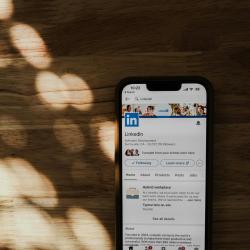The Ultimate Guide to Crafting the Perfect Cover Letter
Your cover letter is your first and potentially only chance to make a great impression on a potential employer. It's your opportunity to showcase your personality, highlight your achievements, and explain why you're the perfect fit for the position. A well-crafted cover letter can differentiate you from other candidates and open doors to new career opportunities. Here’s the ultimate guide to writing a standout cover letter that gets noticed.
Understanding the Purpose of a Cover Letter
Before writing your cover letter, it’s crucial to understand its purpose. A cover letter should complement your resume by:
- Personalizing your application.
- Demonstrating your genuine interest in the company and role.
- Highlighting specific achievements relevant to the job.
- Explaining how your background fits the job requirements.
- Encouraging the hiring manager to move you to the next stage of the hiring process.
Preliminary Research
-
Understand the Job Description:
Carefully read the job posting and note the key skills and experiences that the employer is seeking. -
Research the Company:
Understand the company’s mission, culture, and recent developments. This will help you tailor your cover letter to align with their values and demonstrate that you've done your homework. -
Know Your Audience:
Whenever possible, address your letter to the hiring manager by name rather than using a generic salutation like "To Whom It May Concern." This shows that you have made an effort to personalize your application.
Structuring Your Cover Letter
A cover letter should be clear and concise, typically no longer than one page. Here is a suggested structure:
1. Header
Include your contact information, the date, and the employer’s contact information at the top of the letter.
2. Salutation
If you know the hiring manager's name, address them directly (e.g., "Dear Ms. Jones"). If not, "Dear Hiring Manager" is generally acceptable.
3. Opening Paragraph
Begin with a strong introduction. State the position you’re applying for, where you found the job listing, and a brief sentence on why you’re excited about the opportunity.
4. Body Paragraphs
Use one or two paragraphs to highlight how your experience, skills, and achievements align with the job requirements.
-
Tailored Achievements:
Share specific examples from your past experiences that demonstrate your relevant skills. Quantify achievements when possible. -
Highlight Your Fit:
Explain why you’re particularly interested in the company and role. Relate it back to your career goals or personal values.
5. Closing Paragraph
Reiterate your interest in the role and express your enthusiasm for the possibility of an interview. Indicate how you will follow up and thank the reader for their time and consideration.
6. Signature
Close with a professional sign-off (e.g., "Sincerely") followed by your name. If sending a hard copy, include a space for your signature.
Tips for a Successful Cover Letter
-
Customization is Key:
Avoid generic cover letters. Tailor each letter for the specific position and company. -
Keep it Concise:
Stick to relevant information and maintain a clear, focused narrative. -
Professional Tone:
Maintain a professional and positive tone throughout the letter. -
Proofread:
Spelling or grammar mistakes can undermine your professionalism. Proofread thoroughly or ask someone else to review your letter. -
Format Wisely:
Use a clean and professional format with a readable font. Match it with your resume for a cohesive application. -
Use Action Verbs:
Strong verbs can make your achievements stand out (e.g., "achieved," "designed," "led," "developed").
Conclusion
Crafting the perfect cover letter takes time and effort, but it's an investment worth making. A well-designed cover letter not only highlights your qualifications but also sets the tone for your professional narrative. By showcasing your personality, enthusiasm, and alignment with the company’s goals, you stand a better chance of landing that coveted interview. Remember, each job is unique, and so should be each cover letter you write. Happy crafting!






















